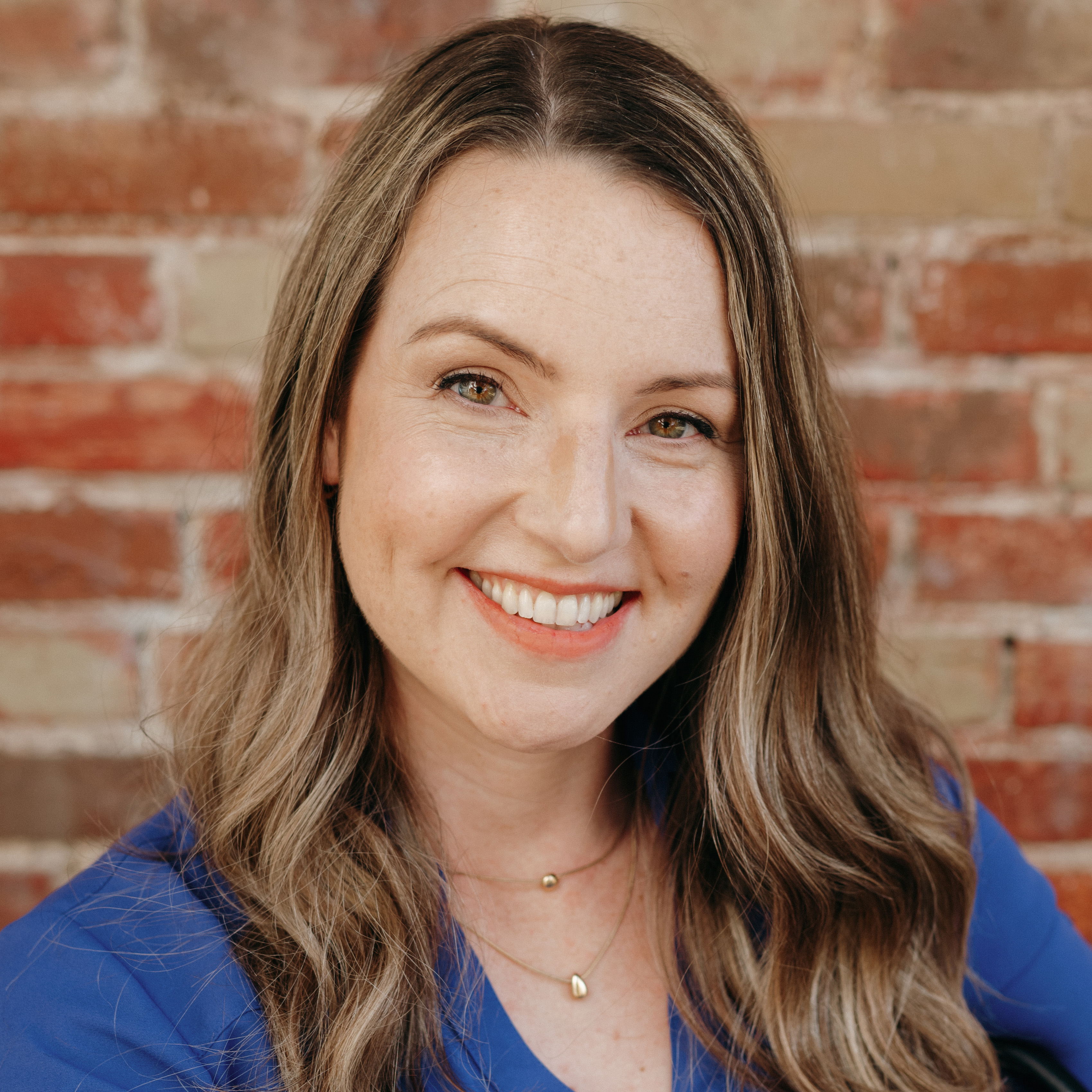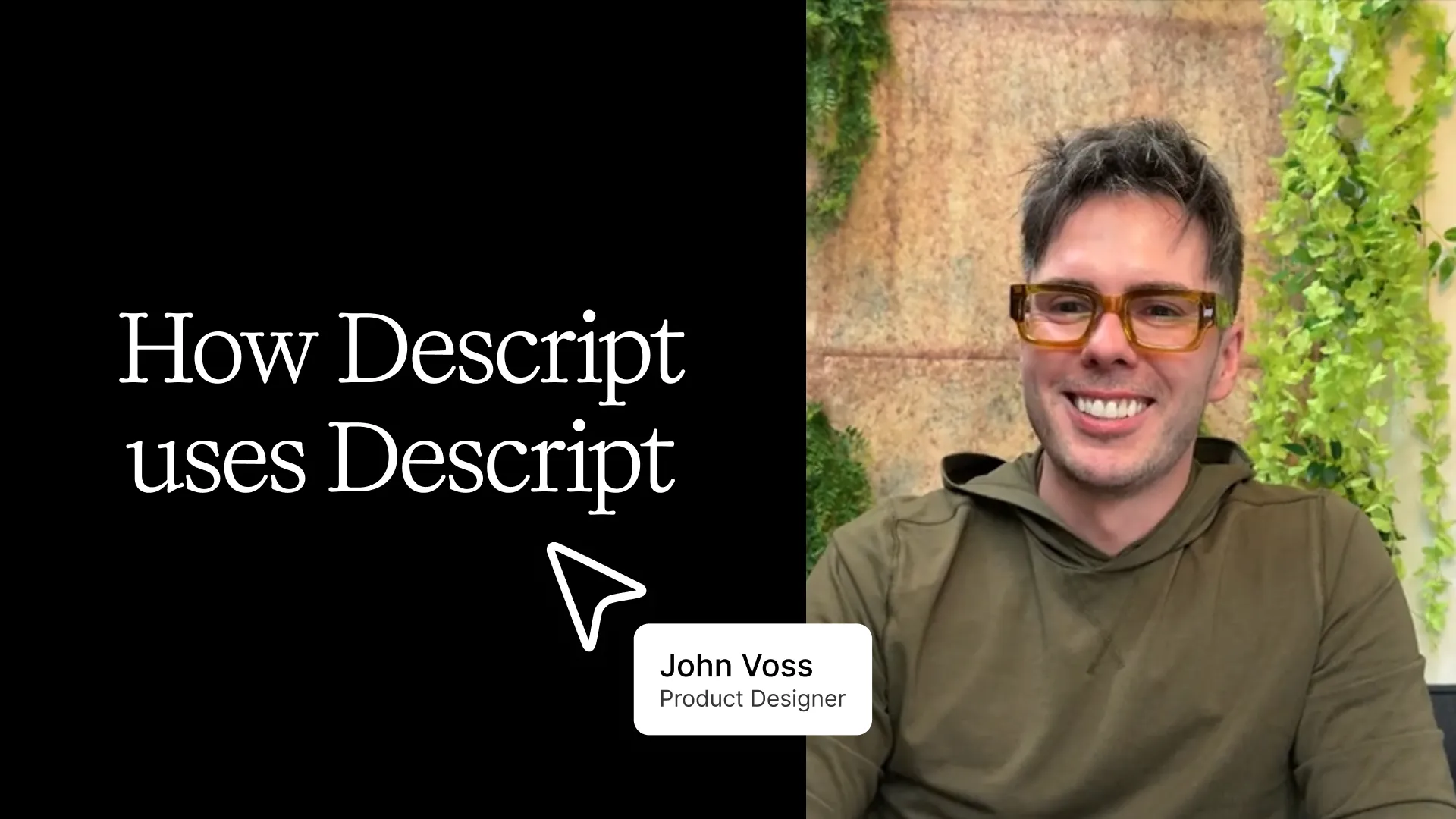What type of content do you primarily create?




At Descript, we use Descript every day, for all sorts of video—sharing info, presentations, reporting on research, quick messages, and of course all of our marketing video. We kind of have to, but we also routinely find that video is just a superior way to communicate—and Descript makes it easy. Here's an example.
John Voss is a staff product designer at Descript who works on our core editor—the place where Descript users spend most of their time. When John needs to share design work with stakeholders and get feedback, he creates lovely video walkthroughs that make your standard screen recordings look like the Zapruder film. We talked to him about his creative workflow and why video beats static mockups every time.
Why use video for design walkthroughs?
When we are showing designs, it's really hard to understand what's going on with static images because designs are made to be used. There's movement, there's really a flow between all of these states, and so it just makes sense to present them in motion. The thing that I'm showing isn't actually really our app—it's a bunch of static designs that are being strung together. Video gives you that experience of moving through and using this product and what it would actually feel like to go through this process, instead of "here is step A in a static image and here's step B in a static image." Movement really helps people understand what you're presenting.
Isn't video a lot more work?
I try to work lazy and work smart. Anytime I can create one thing that serves multiple purposes, I'll do that. If you create a video walkthrough for the purpose of soliciting feedback from stakeholders, it's also really easy to repurpose that walkthrough as an FYI for the other designers to say, "this is the state of the feature that we're working on." It can serve multiple audiences sometimes without any extra work. Sometimes all you have to do is drag it into a new composition and do an AI voiceover and you're done.
How did you create that polished screen recording effect?
I wanted to recreate the experience of looking at this thing on a desktop, give you a little bit of the feel of really using this design that I'm walking people through. But at the same time, I wanted to be able to direct people's attention within the screen recording. When you record your screen, it acts just like a layer that you can resize like any other layer. If you open the timeline or the layers panel, you can put it in front or behind other layers. To get that layout, I dropped an image that was going to be my desktop into the timeline, and I just dragged my screen recording up above it and then resized it so it looked like a browser window.
Sometimes I will also bring in PNGs of different cursors and mice pointers with transparent backgrounds so I can position them and move them around as needed. Sometimes I want the mouse to be a little bit bigger than it is in a screen recording, so I'll use images to fake it.
What Descript features were most valuable?
Recorder, obviously. I'm also a big fan of scenes. It is a really natural transition if you're used to working in slides and creating decks to go to using scenes and using transitions to get a little bit of polish, a little bit of movement in things without too much work. Those have been really valuable.
I also really like text-to-speech and regenerate. I am constantly slurring my words or forgetting what I was saying or saying "um" a lot. All of the script editing features have just been huge productivity gains for me. It's so easy to remove the filler words. When I do sort of mush my words together or stumble or say the wrong thing, it's really easy to just go in and regenerate that and patch that up. I use that on every video. I end up using that all the time.
What would you have done without Descript?
I probably would've driven myself a little crazy in a slides program. Descript is really nice because I can do the recording, I can do the editing, I can do the sharing all in one place, whereas before, I would be creating my designs in Figma or design tooling, and then turning them into slides that I can use as a walkthrough for folks. Then doing some recording in another app and then maybe, if I wanted to do some fancy animations, bringing in Adobe Suite and trying to remind myself how to work that sort of software, which is a little bit more complex than my video making skills actually are right now.
At that point you have to start making the trade-off of, well, if I have to do all of that in all of these different places and then string it all together, is it as efficient? Am I actually getting that payoff? I think that's one of the reasons why I haven't used that format a lot in previous jobs. In past companies we rely a lot on decks to do similar stuff, but decks really aren't as compelling as video. They don't tell as consistent and clear a story.























%201.svg)





